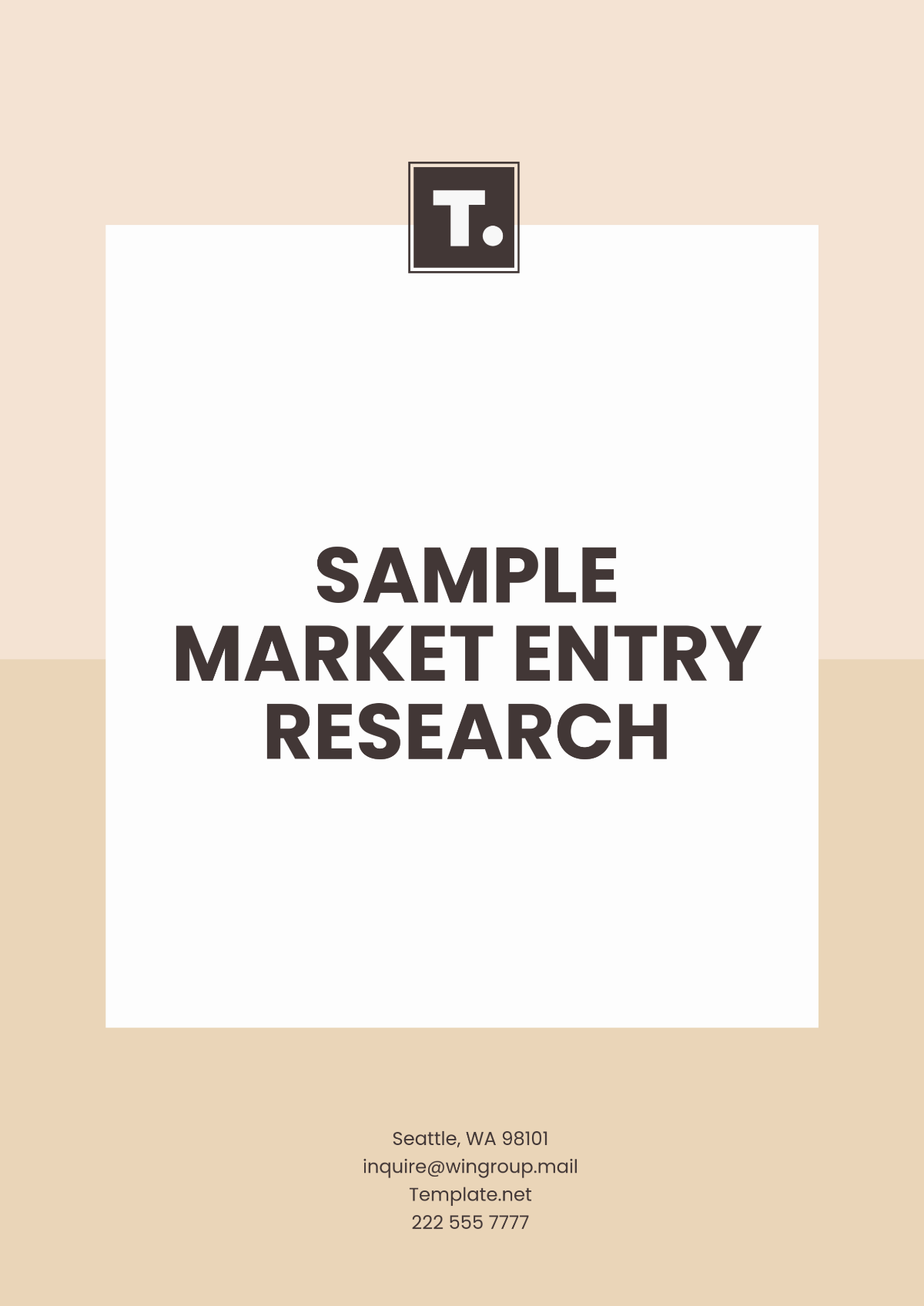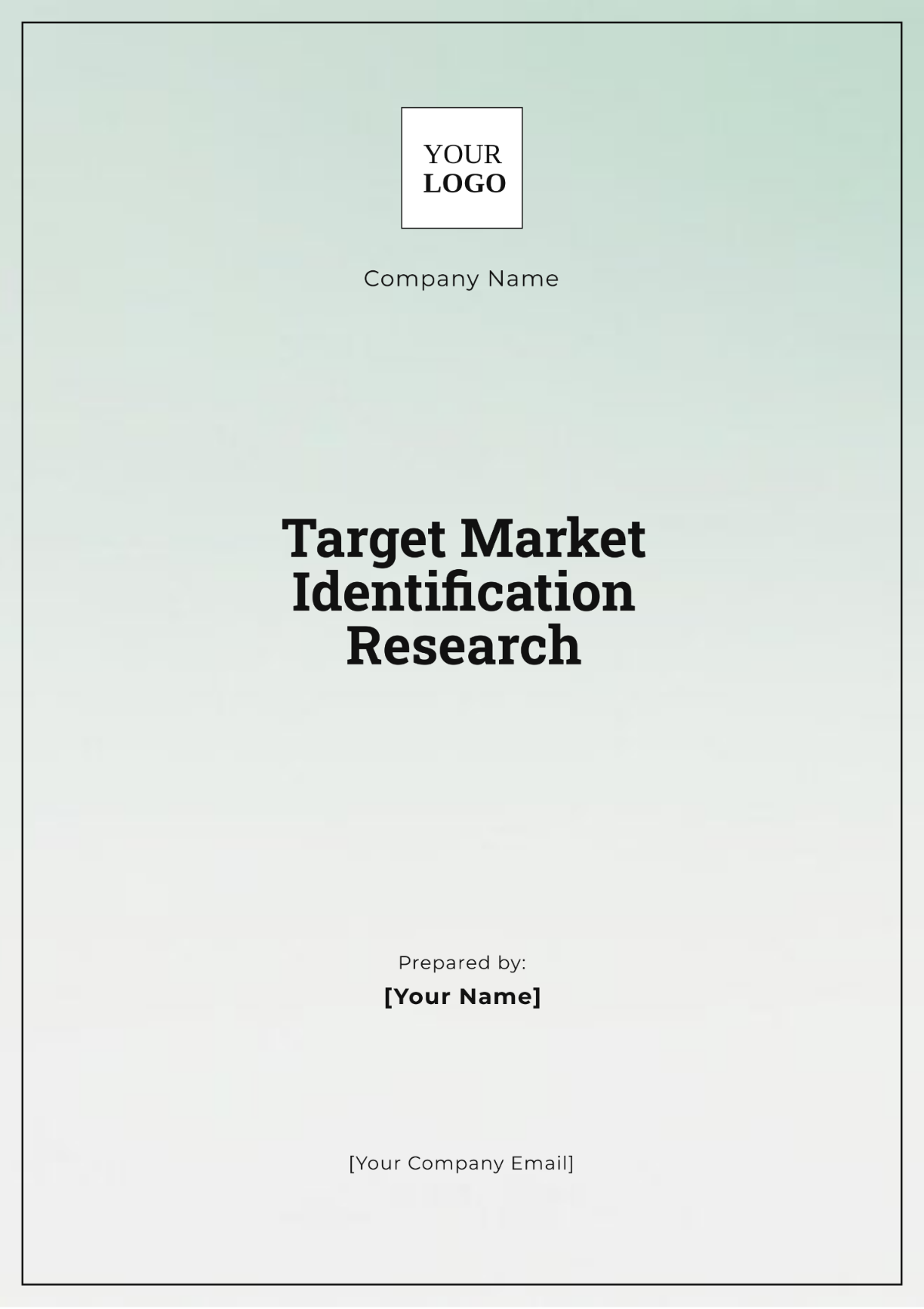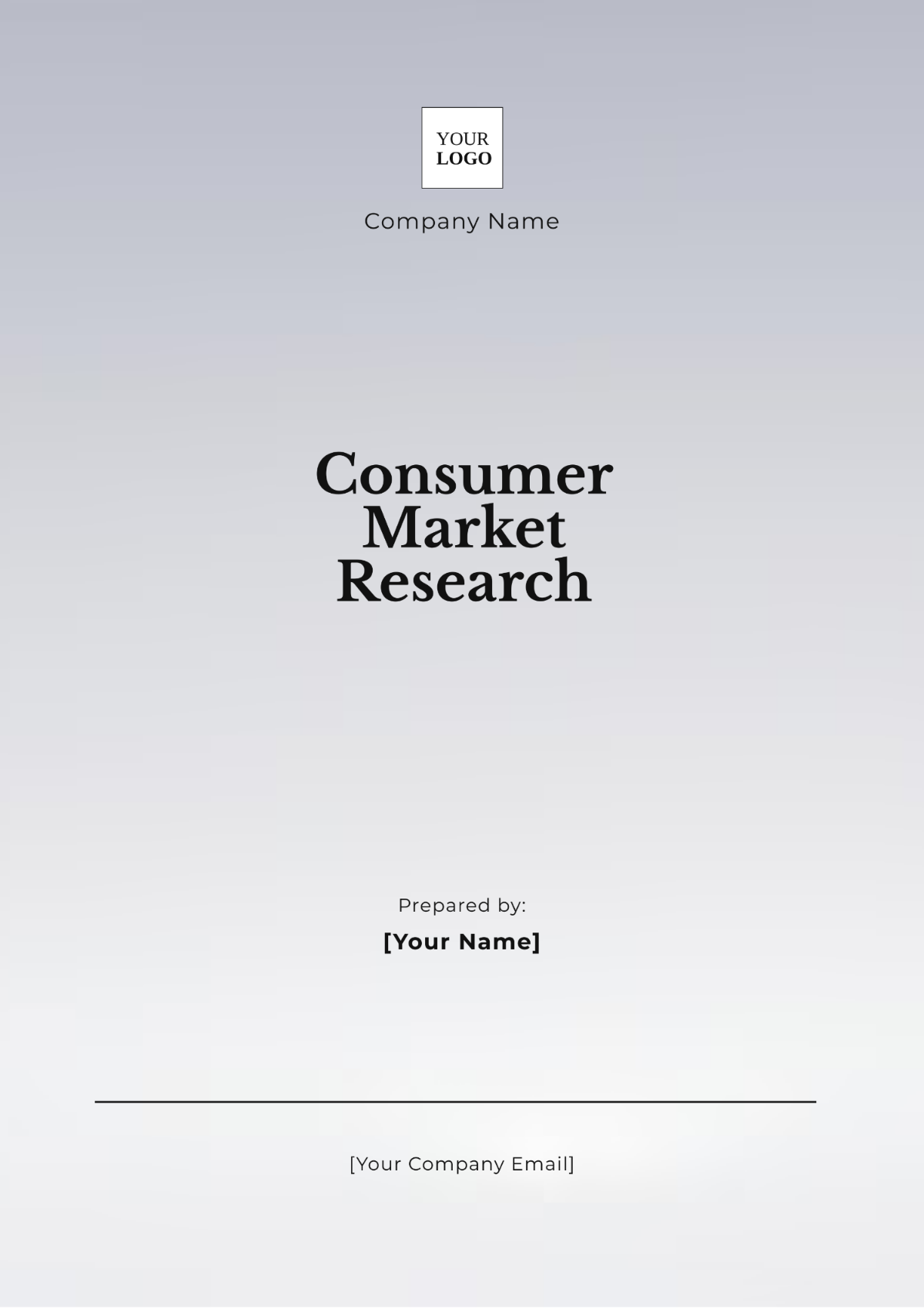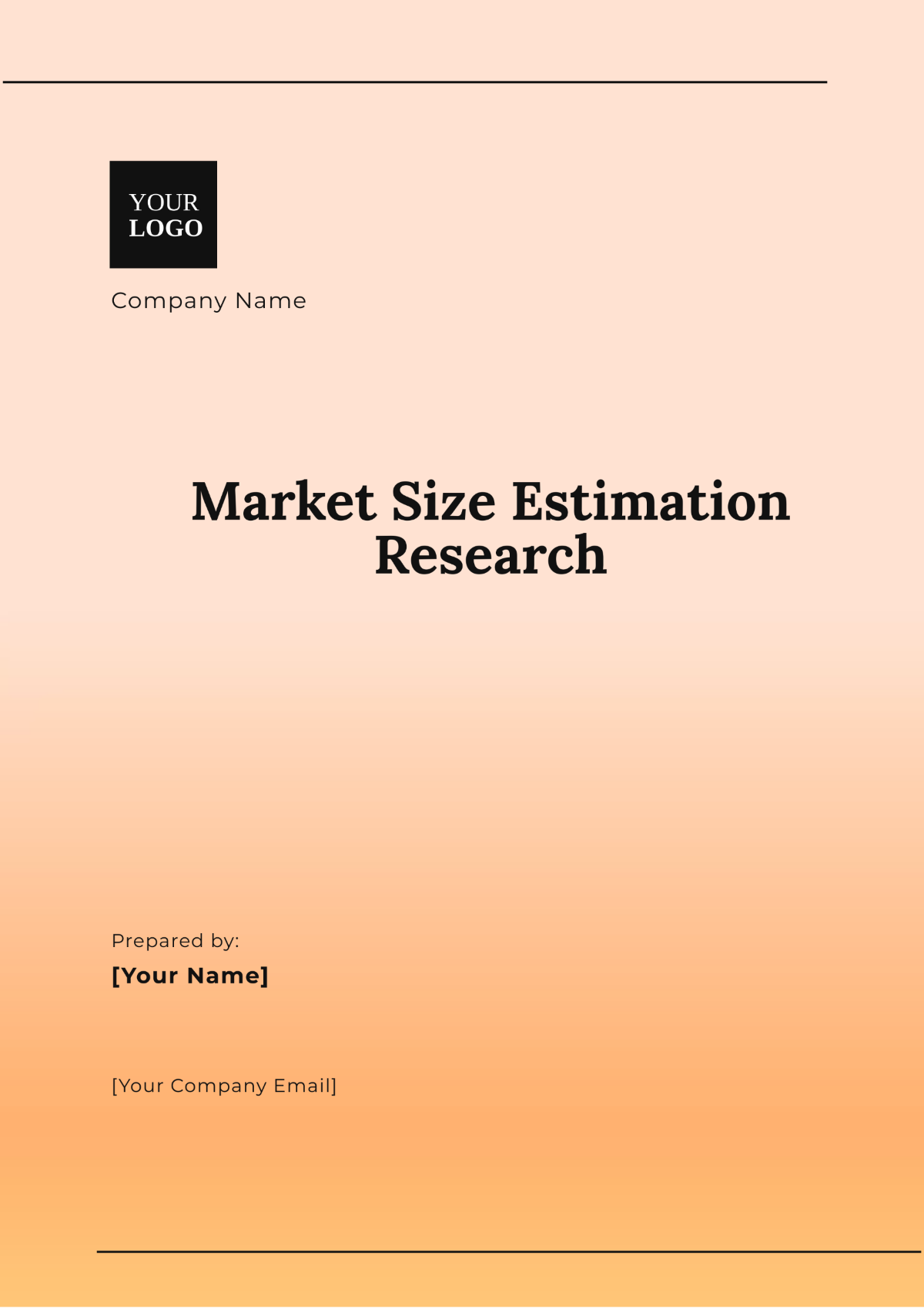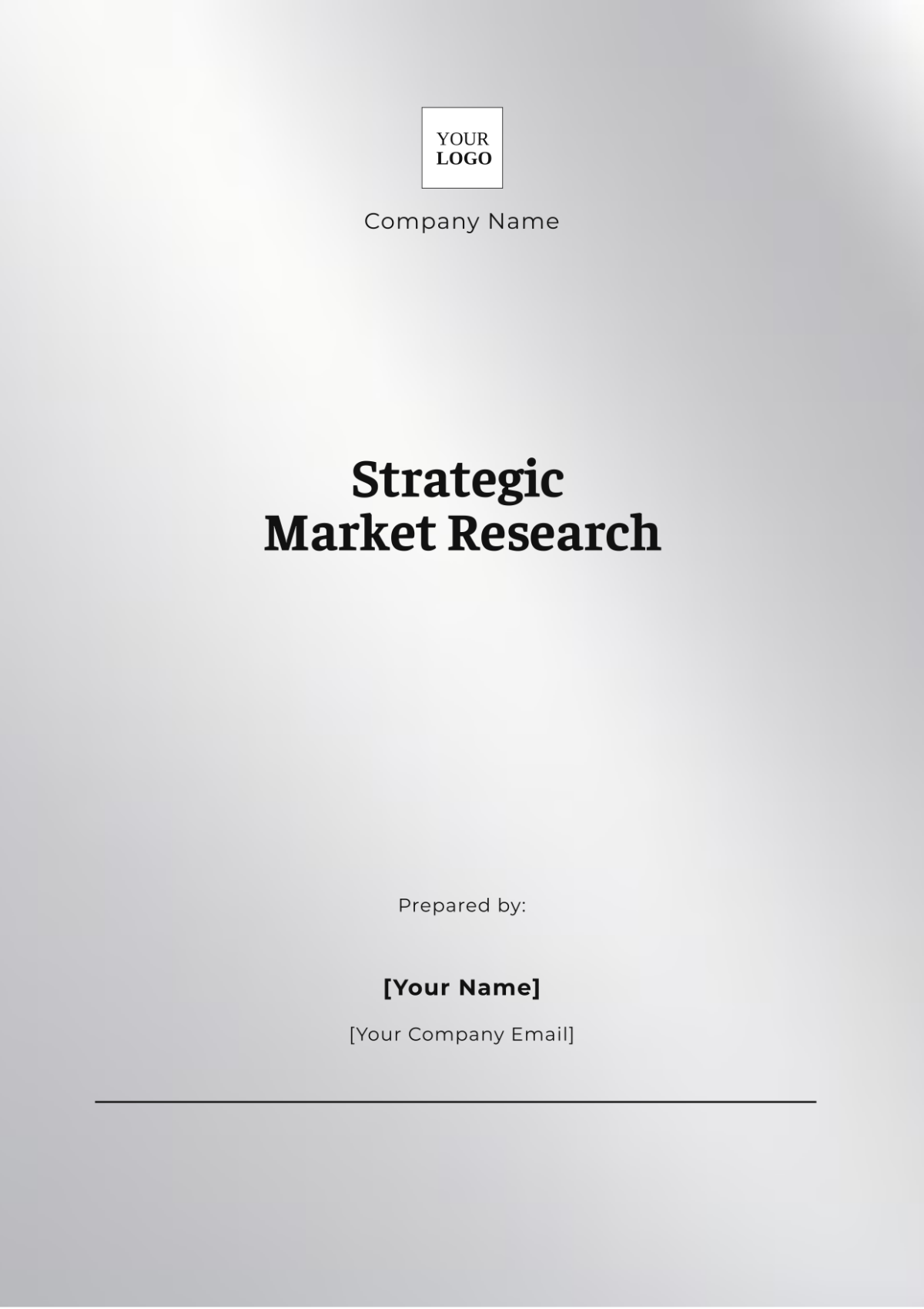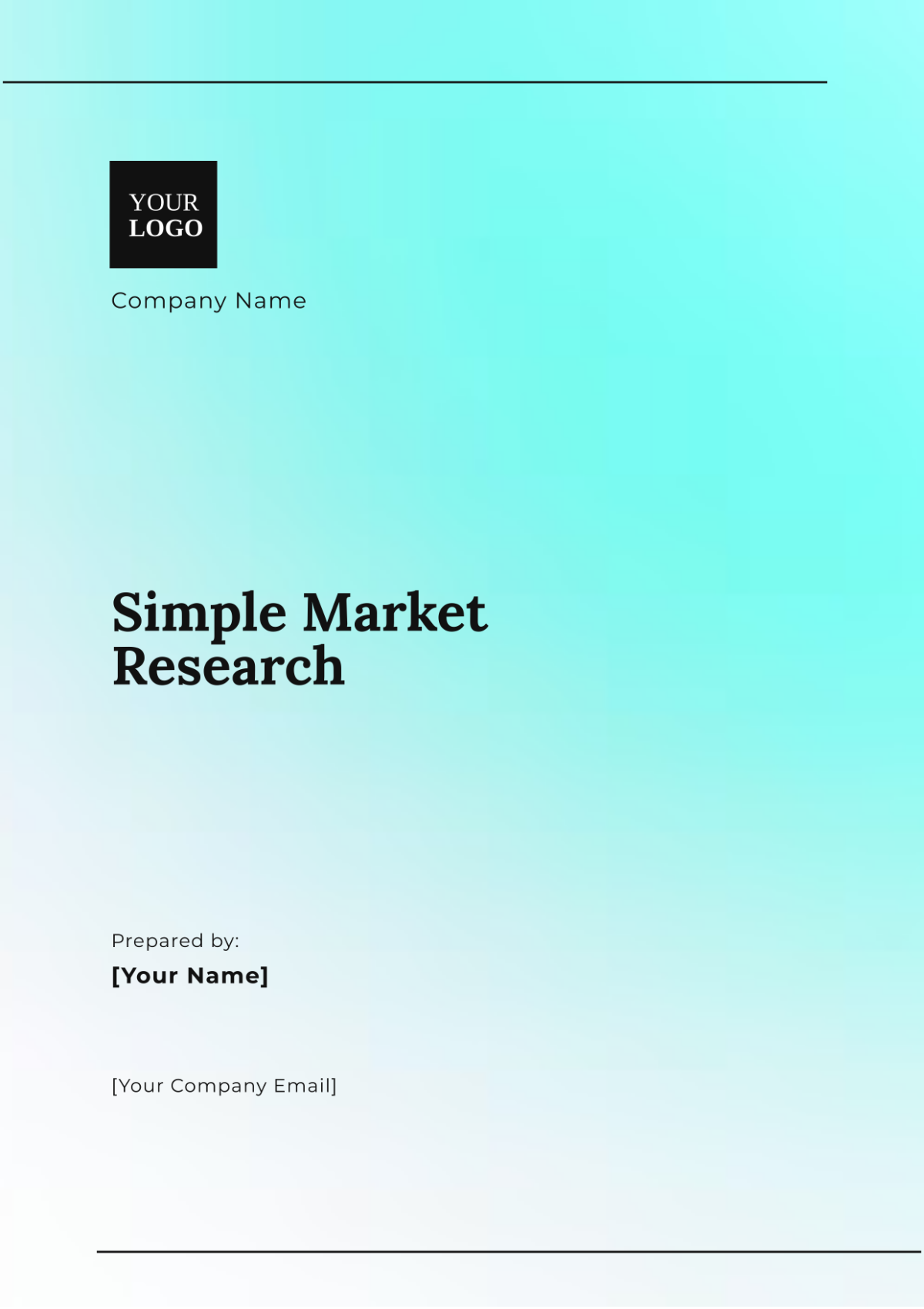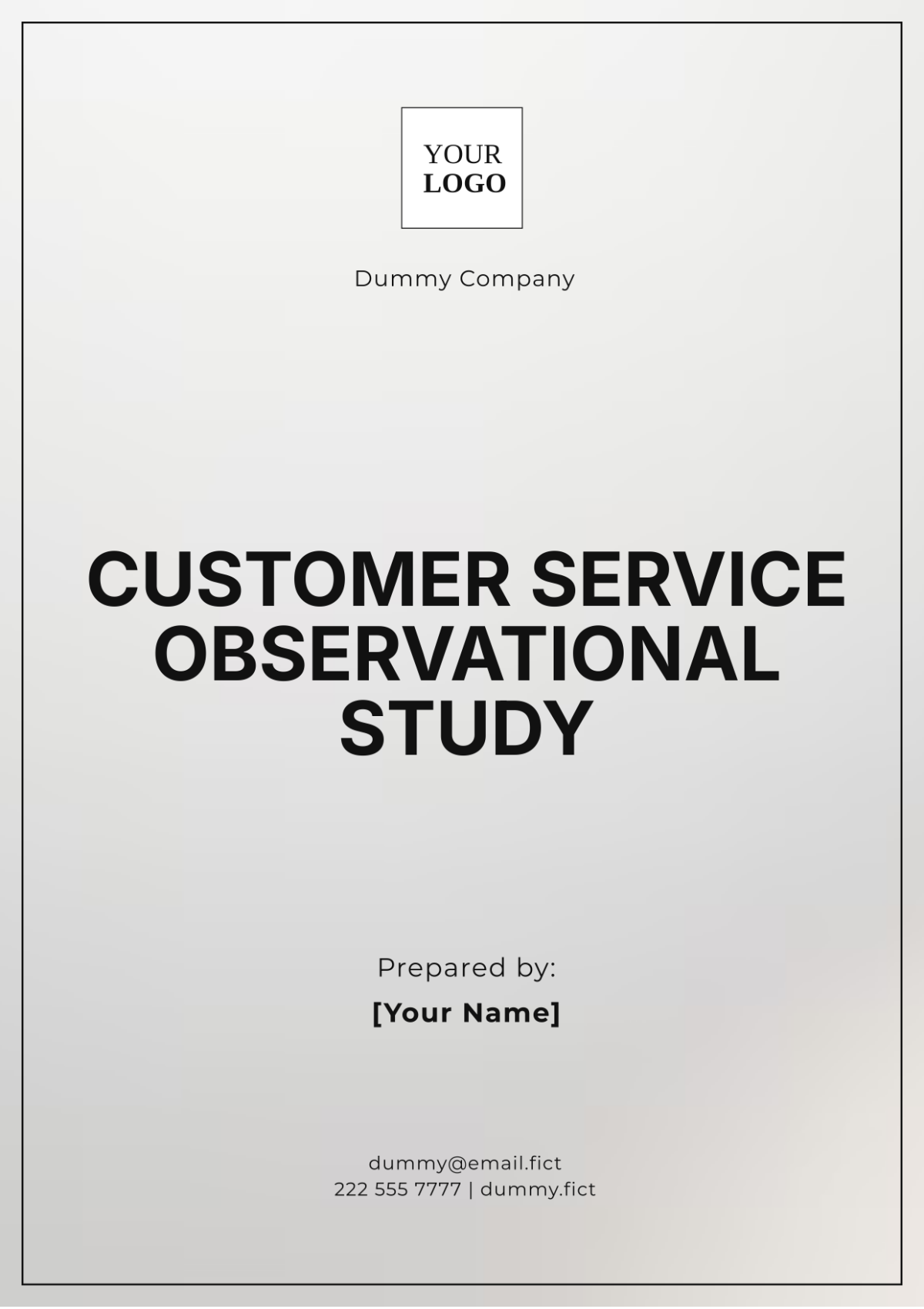Marketing Product Pricing Research Sample
1. Executive Summary
This report presents a detailed analysis of the product pricing strategy for [Your Company Name], focusing on the "EcoClean Vacuum 3000," a cutting-edge home appliance designed for environmentally conscious consumers who prioritize sustainability without compromising on performance. The analysis leverages recent market data, consumer behavior studies, competitive pricing strategies, and financial projections to propose an optimal pricing model for this innovative product. The research is structured to identify key price points, evaluate the cost structures involved in production and distribution, and offer strategic recommendations aimed at maximizing market share, profitability, and long-term brand positioning.
1.1 Key Findings
Optimal Price Point: Through rigorous analysis, the recommended retail price for the EcoClean Vacuum 3000 is determined to be $299.99. This price point balances consumer value perception with competitive positioning, allowing [Your Company Name] to maximize both sales volume and profit margins.
Price Elasticity: The price elasticity study reveals that a 10% increase in price results in a 3% decrease in sales volume. This finding highlights the moderate price sensitivity among target consumers, suggesting that a carefully managed pricing strategy can maintain profitability even with minor price adjustments.
Competitive Benchmarking: Our benchmarking analysis identifies that leading competitors, such as GreenVac Pro and CleanMaster X5, price their eco-friendly vacuum models within the range of $275.00 to $325.00. Positioning the EcoClean Vacuum 3000 at $299.99 allows it to compete effectively within this range while emphasizing its superior features.
Profit Margins: At the proposed price of $299.99, the EcoClean Vacuum 3000 achieves a gross profit margin of 30%. This calculation factors in all relevant costs, including production, distribution, marketing, and after-sales support, ensuring that the product remains financially viable and profitable.
2. Market Analysis
2.1 Industry Overview
The global home appliance market, with a particular focus on the eco-friendly segment, has demonstrated significant growth over the past decade. The market has expanded at a compound annual growth rate (CAGR) of 7.5%, reaching a total market size of $15.2 billion as of the last fiscal year. The increasing demand for sustainable and energy-efficient products is a key driver of this growth, as consumers become more aware of environmental issues and seek products that align with their values. The EcoClean Vacuum 3000 is strategically positioned to capitalize on this trend, offering a product that not only meets but exceeds industry standards for sustainability and energy efficiency.
2.2 Target Market Segmentation
2.2.1 Demographic Profile
The primary target market for the EcoClean Vacuum 3000 includes a diverse yet focused demographic group:
Age Group: 25-45 years, representing young professionals and middle-aged homeowners who prioritize quality and sustainability.
Household Income: $60,000 - $120,000 per year, reflecting a middle to upper-middle-class consumer base with disposable income to invest in premium household appliances.
Education Level: College degree or higher, indicating a well-informed and research-driven consumer group that values product innovation and environmental responsibility.
Geographic Location: Urban and suburban areas, particularly in regions known for eco-conscious communities, such as the West Coast and Northeast of the United States, as well as major European cities.
2.2.2 Psychographic Profile
The psychographic profile of the target market is characterized by the following attributes:
Values: Consumers in this segment prioritize sustainability, environmental responsibility, and health. They seek products that align with their values and contribute to a greener lifestyle.
Lifestyle: The target audience includes busy professionals, young families, and environmentally conscious individuals who value efficiency, convenience, and long-term savings.
Buying Behavior: These consumers are highly selective and conduct extensive research before making purchase decisions. They are willing to pay a premium for products that offer superior quality, innovation, and sustainability.
2.3 Consumer Behavior Analysis
2.3.1 Purchasing Factors
Several factors play a critical role in influencing the purchase decision for the EcoClean Vacuum 3000:
Energy Efficiency: One of the standout features of the EcoClean Vacuum 3000 is its exceptional energy efficiency. The vacuum consumes 30% less energy than traditional models, which not only reduces electricity costs for consumers but also aligns with their desire to minimize their environmental footprint. This feature is a significant selling point, particularly for consumers who are committed to sustainability.
Filtration System: The EcoClean Vacuum 3000 is equipped with a state-of-the-art HEPA filter that captures 99.97% of dust, allergens, and airborne particles. This feature is especially appealing to families with young children, pets, or individuals with allergies, as it ensures a cleaner and healthier living environment.
Noise Level: Operating at just 60 decibels, the EcoClean Vacuum 3000 is one of the quietest vacuums in its category. This low noise level enhances the user experience, allowing for cleaning at any time without disturbing other household activities.
Warranty: The product comes with a comprehensive 5-year warranty, which is 2 years longer than the industry average. This extended warranty provides customers with peace of mind and reinforces the product’s reputation for durability and quality.
2.3.2 Willingness to Pay
The consumer research conducted for this report indicates that 60% of surveyed customers are willing to pay a premium of up to $50 for products that are both eco-friendly and energy-efficient. This finding is crucial in justifying the proposed price of $299.99, which is slightly higher than conventional vacuum models but offers significant added value in terms of sustainability, performance, and long-term cost savings.
3. Competitive Analysis
3.1 Key Competitors
In the competitive landscape, three primary competitors have been identified and analyzed for this pricing study:
GreenVac Pro
Price: $285.00
Features: The GreenVac Pro is equipped with advanced energy-saving technology, a washable filter, and a 3-year warranty. It is a well-known brand in the eco-friendly market, with a strong reputation for reliability and performance.
Strengths: The brand’s extensive distribution network and established reputation give it a significant market presence. Additionally, its energy-saving features resonate well with eco-conscious consumers.
Weaknesses: The GreenVac Pro consumes slightly more energy compared to the EcoClean Vacuum 3000 and lacks some of the advanced filtration and noise reduction features that our product offers.
CleanMaster X5
Price: $320.00
Features: The CleanMaster X5 features a dual-motor system, a 2-stage filtration process, and a 4-year warranty. It is known for its powerful suction and durable construction, making it a popular choice among consumers who prioritize performance.
Strengths: The CleanMaster X5 excels in suction power and durability, making it suitable for heavy-duty cleaning tasks. Its longer warranty also adds to its appeal.
Weaknesses: The vacuum’s operation is louder (70 decibels) and it is heavier (18 lbs) than the EcoClean Vacuum 3000, making it less user-friendly for everyday use.
PureSweep EcoMax
Price: $275.00
Features: The PureSweep EcoMax offers a compact design, rechargeable battery, and a 2-year warranty. It is a budget-friendly option aimed at consumers looking for basic functionality in an eco-friendly package.
Strengths: The compact and portable design, along with its lower price point, makes it an attractive option for consumers with smaller living spaces or limited budgets.
Weaknesses: The PureSweep EcoMax has a shorter battery life, fewer features, and a shorter warranty compared to the EcoClean Vacuum 3000, limiting its appeal to a niche segment of the market.
3.2 SWOT Analysis
A SWOT analysis was conducted to evaluate the strategic position of the EcoClean Vacuum 3000 within the market:
3.2.1 Strengths
Sustainability: The EcoClean Vacuum 3000 is constructed using 50% recycled materials, making it one of the most environmentally friendly products in its category. The design ensures that the vacuum is fully recyclable at the end of its lifecycle, reducing its overall environmental impact.
Energy Efficiency: The vacuum’s energy consumption is 30% lower than that of traditional models, providing consumers with long-term savings on electricity bills. This feature aligns with the growing demand for energy-efficient home appliances and strengthens the product’s appeal to eco-conscious buyers.
3.2.2 Weaknesses
Price Sensitivity: While the EcoClean Vacuum 3000 offers superior features, its price point of $299.99 positions it at the higher end of the market. This may limit its appeal to budget-conscious consumers who prioritize cost over sustainability and performance.
Market Penetration: As a relatively new entrant in a competitive market, the EcoClean Vacuum 3000 faces challenges in establishing brand recognition and capturing market share, especially against well-established competitors.
3.2.3 Opportunities
Growing Demand for Eco-Friendly Products: The increasing consumer awareness of environmental issues presents a significant opportunity for the EcoClean Vacuum 3000. As more consumers prioritize sustainability in their purchasing decisions, the product’s eco-friendly features become a key differentiator.
Technological Advancements: Continued investment in research and development offers opportunities for [Your Company Name] to enhance the EcoClean Vacuum 3000 further. Innovations such as smart home integration, improved battery life, and advanced AI-driven cleaning algorithms can provide additional selling points and justify premium pricing.
3.2.4 Threats
Intensified Competition: The market for eco-friendly home appliances is becoming increasingly crowded, with more companies entering the space. Established brands with significant market share may aggressively compete on price or introduce new features to outcompete the EcoClean Vacuum 3000.
Economic Downturns: Economic instability can lead to reduced consumer spending, particularly on non-essential items like premium home appliances. In such scenarios, consumers may opt for lower-priced alternatives, affecting sales and profitability.
4. Pricing Strategy
4.1 Cost Analysis
To determine the optimal pricing for the EcoClean Vacuum 3000, a comprehensive cost analysis was conducted. This analysis includes both fixed and variable costs, ensuring that the pricing strategy supports both short-term profitability and long-term sustainability.
4.1.1 Fixed Costs
Research and Development (R&D): $1.2 million annually. This cost covers ongoing R&D efforts to improve product features, energy efficiency, and sustainability.
Manufacturing Equipment: $800,000. This includes the purchase and maintenance of specialized equipment required for the production of the EcoClean Vacuum 3000.
Marketing and Branding: $500,000. This budget supports advertising campaigns, promotional activities, and brand development initiatives.
4.1.2 Variable Costs
Raw Materials: $75 per unit. The primary materials include recycled plastics, aluminum, and high-efficiency motors.
Labor: $40 per unit. Labor costs are incurred during the assembly and quality control processes.
Distribution: $20 per unit. This includes shipping, handling, and logistics expenses.
4.2 Pricing Models Considered
Several pricing models were evaluated to identify the most effective approach for the EcoClean Vacuum 3000:
4.2.1 Cost-Plus Pricing
In a cost-plus pricing model, the product price is determined by adding a fixed markup to the total cost of production. Given the production cost of $135 per unit (raw materials + labor + distribution), a 100% markup would result in a selling price of $270. However, this approach does not fully capitalize on the product's value proposition, leaving potential revenue on the table.
4.2.2 Value-Based Pricing
Value-based pricing sets the product price based on the perceived value to the customer rather than the cost of production. Considering the product’s eco-friendly features, energy efficiency, and superior performance, consumers perceive a higher value, allowing for a price point of $299.99. This model aligns with the brand's positioning and maximizes profitability.
4.2.3 Competitive Pricing
Competitive pricing involves setting a price based on competitors' pricing strategies. While the EcoClean Vacuum 3000’s competitors are priced between $275 and $325, competitive pricing would suggest a mid-range price point of $300. However, this approach may not fully reflect the unique features and added value offered by the EcoClean Vacuum 3000.
4.3 Final Pricing Recommendation
After evaluating the various pricing models and considering both cost factors and market dynamics, the final recommended price for the EcoClean Vacuum 3000 is $299.99. This price point leverages the value-based pricing model, ensuring that [Your Company Name] captures the full value of the product while remaining competitive in the market. Additionally, this price supports a healthy profit margin, enabling continued investment in innovation and market expansion.
5. Strategic Recommendations
5.1 Short-Term Strategies
5.1.1 Market Penetration Pricing
To gain a foothold in the competitive market, a short-term market penetration strategy can be employed. This approach involves offering limited-time discounts or promotional bundles to attract early adopters and generate word-of-mouth marketing. For instance, offering a 10% discount for the first three months could accelerate market penetration and help establish the EcoClean Vacuum 3000 as a leading eco-friendly product.
5.1.2 Partnership with Retailers
Forming strategic partnerships with major retailers, both online and brick-and-mortar, is essential for expanding product reach. Collaborating with eco-conscious retail chains and e-commerce platforms, such as Whole Foods or Amazon's "Climate Pledge Friendly" category, can enhance product visibility and credibility among the target audience.
5.2 Long-Term Strategies
5.2.1 Product Line Expansion
To sustain growth and cater to different market segments, [Your Company Name] should consider expanding the product line. Introducing variants of the EcoClean Vacuum 3000, such as a cordless model, a compact version for apartments, or a deluxe version with smart home integration, can broaden the customer base and increase sales.
5.2.2 Continuous Product Improvement
Ongoing investment in research and development is crucial to maintaining a competitive edge. Enhancements such as extended battery life, improved noise reduction, or even autonomous cleaning features can keep the product relevant and appealing in a rapidly evolving market.
5.3 Pricing Adjustments
5.3.1 Seasonal Promotions
Implementing seasonal pricing strategies, such as discounts during Black Friday or Earth Day, can drive sales during peak shopping periods. These promotions should be carefully timed and communicated to maximize impact without eroding the perceived value of the EcoClean Vacuum 3000.
5.3.2 Dynamic Pricing
Leveraging dynamic pricing, where prices are adjusted based on real-time demand and market conditions, can optimize revenue. For example, during periods of high demand or low inventory, prices can be increased to maximize profit margins. Conversely, prices can be lowered during off-peak seasons to stimulate sales and manage inventory levels.
6. Appendices
6.1 Data Tables
Feature | EcoClean Vacuum 3000 | GreenVac Pro | CleanMaster X5 | PureSweep EcoMax |
|---|---|---|---|---|
Price | $299.99 | $285.00 | $320.00 | $275.00 |
Energy Efficiency | 30% less energy | 20% less energy | 25% less energy | 22% less energy |
Noise Level | 60 dB | 65 dB | 70 dB | 68 dB |
Warranty | 5 years | 3 years | 4 years | 2 years |
Weight | 12 lbs | 15 lbs | 18 lbs | 10 lbs |
6.2 Consumer Survey Results
Below are sample responses from the consumer survey conducted as part of this research:
Question: "What is the most important factor in your decision to purchase a vacuum cleaner?"
Response: 45% cited "Energy Efficiency"
Response: 30% cited "Price"
Response: 15% cited "Noise Level"
Response: 10% cited "Brand Reputation"
Question: "How much more would you be willing to pay for a vacuum cleaner that is 30% more energy-efficient than your current model?"
Response: 60% would pay an additional $25-$50
Response: 30% would pay an additional $50-$75
Response: 10% would pay more than $75

